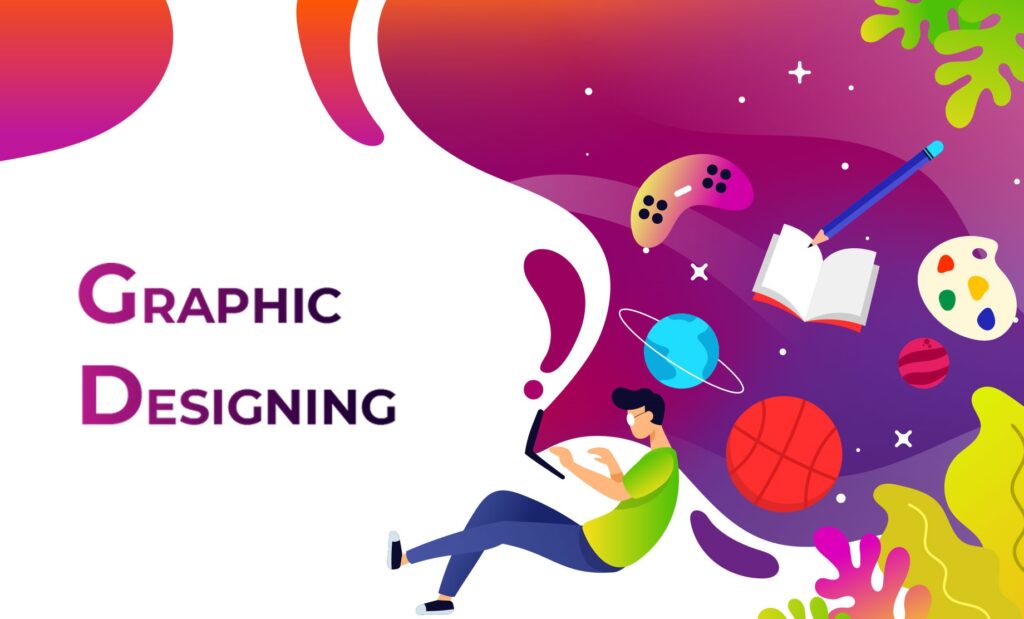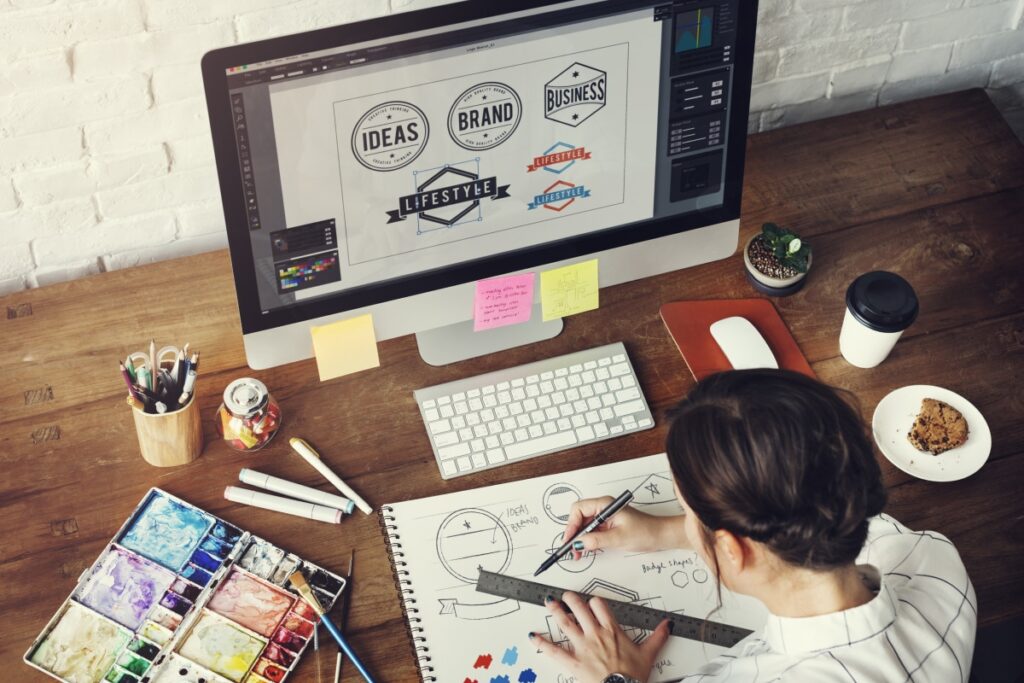Graphic Design
In the dynamic realm of digital design, the intersection of graphic design and user experience (UX) is a crucial crossroads that significantly impacts how users interact with websites, apps, and various digital platforms. A visually stunning design may catch the eye, but true success lies in delivering an intuitive and enjoyable user experience. This blog delves into the symbiotic relationship between graphic design and UX, exploring how these two elements converge to create seamless and engaging digital interfaces.

- Visual Appeal vs. Functional Design
At the heart of the intersection lies the balance between visual appeal and functional design. While graphic design focuses on aesthetics, color schemes, and overall visual appeal, UX prioritizes functionality, usability, and the overall satisfaction of the end user. Successful digital designs find the equilibrium, ensuring that visual elements not only captivate but also contribute to a smooth and efficient user experience.
- The Role of Visual Hierarchy in UX Design
Visual hierarchy, a fundamental principle in graphic design, plays a pivotal role in guiding users through the digital landscape. Through strategic use of typography, color, and layout, designers create a hierarchy that directs the user’s attention, helping them navigate seamlessly. This collaboration between graphic designers and UX professionals ensures that essential information stands out, enhancing clarity and user comprehension.
- Responsive Design: Bridging the Gap Across Devices
With the proliferation of devices, responsive design has become a non-negotiable aspect of modern digital experiences. Graphic designers work hand-in-hand with UX specialists to ensure that visuals adapt seamlessly to different screen sizes and resolutions. The goal is to provide a consistent and visually appealing experience, regardless of whether a user is accessing the content on a desktop, tablet, or smartphone.
- The Emotional Impact of Visual Elements
Graphic design has a unique ability to evoke emotions through visuals. When strategically integrated into UX, these emotional cues can significantly enhance the overall user experience. From color psychology to the selection of imagery, every visual element contributes to shaping the user’s emotional response. This collaboration allows designers to create interfaces that not only function well but also resonate with users on a deeper level.
- User-Centered Design: Putting Users at the Core of Design Decisions
User-centered design, a core principle of UX, emphasizes the importance of understanding and empathizing with the end user. Graphic designers play a crucial role in translating these insights into visually compelling designs. Through user personas, journey maps, and usability testing, the collaboration between graphic design and UX ensures that the final product is not only visually appealing but also aligns with the needs and expectations of the target audience.
- Microinteractions: Enhancing User Engagement
Microinteractions are subtle design elements that occur during user interactions, such as clicking a button or hovering over an icon. These tiny animations or visual cues, crafted by graphic designers in collaboration with UX experts, enhance the overall user experience by providing instant feedback and making interactions more engaging. The seamless integration of microinteractions adds a layer of polish to the design, making it more user-friendly and enjoyable.
- Accessibility: Designing for All Users
Inclusivity is a key consideration in both graphic design and UX. Collaboration ensures that designs are accessible to users with diverse needs, including those with disabilities. From creating readable text for visually impaired users to implementing navigation that is intuitive for those using assistive technologies, the intersection of graphic design and UX prioritizes the inclusivity of digital experiences.

Conclusion
The intersection of graphic design and user experience is not a mere convergence of skills but a collaboration that shapes the digital landscape. As designers strive to create visually compelling interfaces, UX professionals ensure that every visual element serves a purpose, contributing to a seamless and enjoyable user experience. In this symbiotic relationship, the fusion of aesthetics and functionality results in digital designs that not only captivate the eye but also provide users with an intuitive and satisfying journey through the digital realm. The future of digital design lies in recognizing and harnessing the power of this intersection, creating experiences that are both visually stunning and user-centrie.


